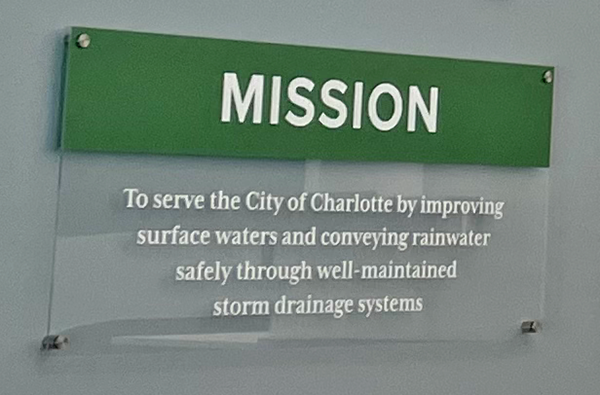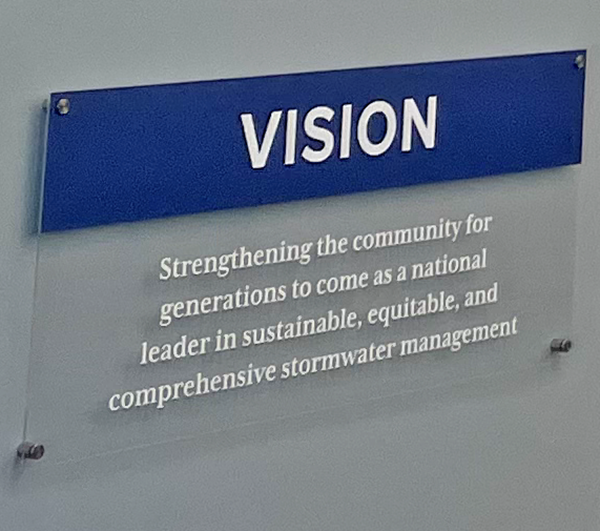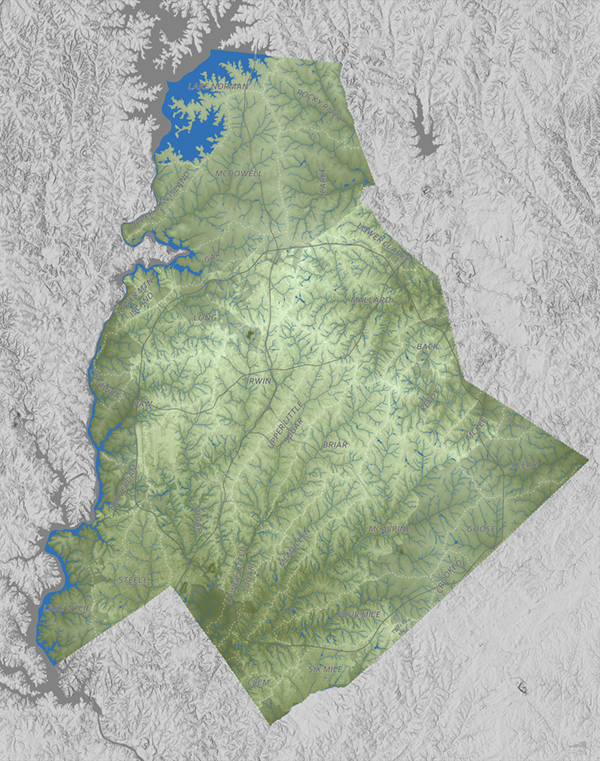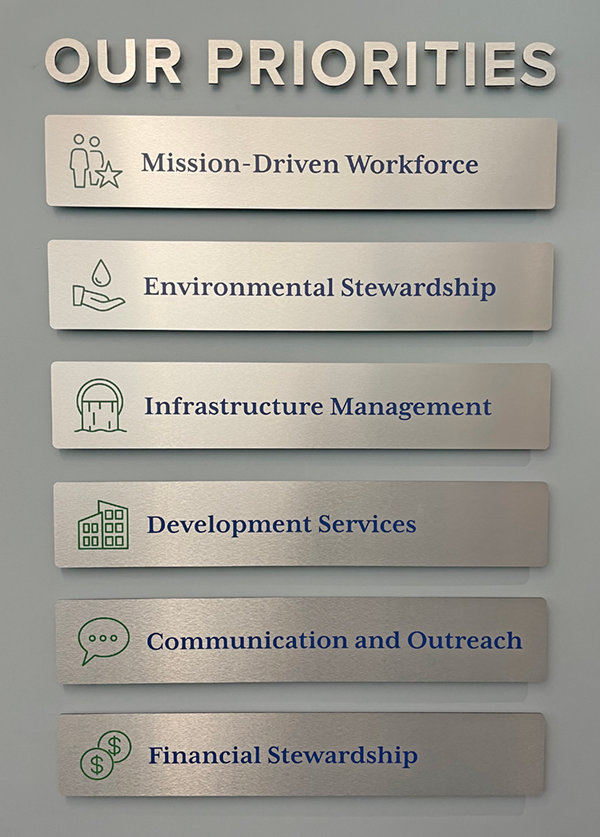
Mission
To serve the City of Charlotte by improving surface waters and conveying rainwater safely through well-maintained storm drainage systems

Vision
Strengthening the community for generations to come as a national leader in sustainable, equitable, and comprehensive stormwater management

Our Team and Values
With 200+ team members, we excel together through our commitment to:
Integrity
Equity & Inclusion
Expertise
Collaboration
Innovation


Watersheds
This map shows the 22 watersheds within Mecklenburg County. A watershed is an area of land where all the rain drains to one body of water.

Our Priorities
Mission-Driven Workforce
To ensure a diverse team that is engaged, highly skilled, and committed to excellence
Environmental Stewardship
To protect and improve the quality of streams and other surface waters
Infrastructure Management
To continuously assess and improve storm drainage to protect public safety and ensure long-term sustainability
Development Services
To develop, implement, and enforce regulations that support the city’s growth and address drainage needs
Communication and Outreach
To enhance understanding of our mission, foster credibility, and encourage community involvement
Financial Stewardship
To responsibly manage finances, fund key programs, and maintain customer affordability
